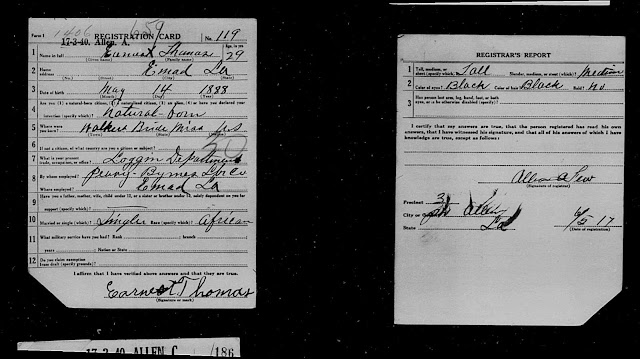In the process of my performing genealogy
research, I could not find some ancestors and people that I sought in Social
Security Death Index . I then began to realize
that some people may have never been included within the Social Security data
base. Many of my ancestors were farmers, cooks, maids and worked in the lumber
industry. I do not know if a person was
prohibited from completing a Social Security application in one of the excluded
classifications. I think it is conceivable that a person might not bother to complete a Social Security application if they
knew they would not receive any benefits. Ancestors may have died after 1935 and before they were included in the Social Security System.
My purpose is not to present an exhaustive presentation of the Social Security System exclusions. I would also like to mention I am not an expert in the nuances of the Social Security System. The Social Security System has evolved since 1935. There have been 37 versions of the Social Security cards and 3 types of cards. For example from 1946 to 1972 printed on the card was "Not For Identification". This might also affect locating individuals by their Social Security number in other records. Possibly knowing the exclusions and inclusions in the Social Security Programs can prevent looking for nonexistent information.
The Social Security slowly began to decreased the exclusions
- 1939 Exclusion of of workers 65 years old and older was eliminated
- 1950-1956 Agricultural workers were included with certain limitations based on pay and days worked
- 1950s Coverage extended to workers in Puerto Rico and the Virgin Island
- 1960 Coverage extended to workers in Guam and America Samoa
- 1951 Coverage was extended to Domestic workers which included maids, butlers, gardeners and chauffeurs with certain limitations based on pay and days worked
- 1951 State and local government employees were included
- 1983 Coverage was extended to civilian employees of the Federal executive, judicial, and legislative branches hired after December 31, 1983. This coverage was given to members of federal judges, executive level political appointees, Congress, the President and Vice President

























